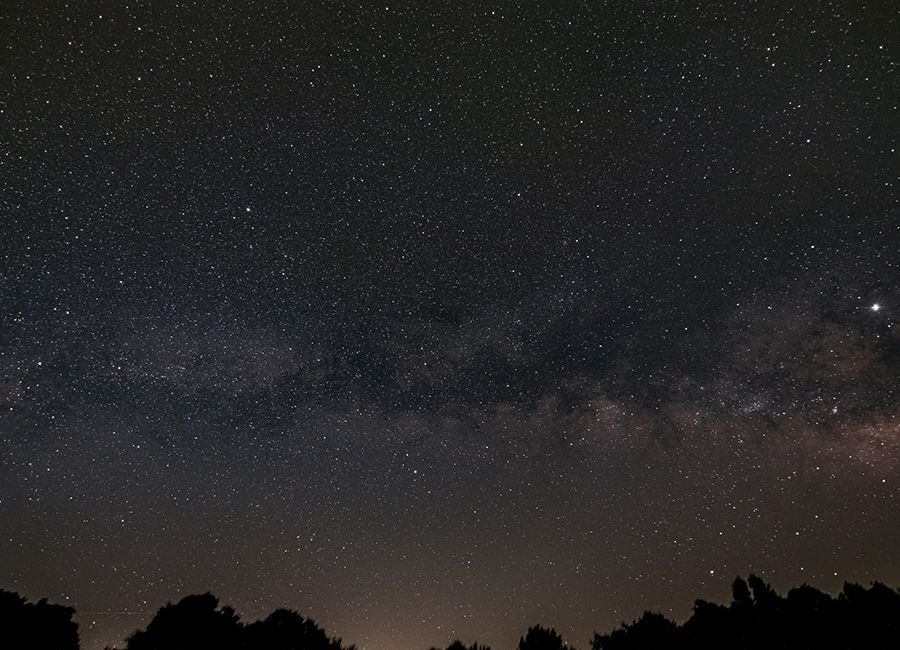Adler Skywatch: September 2019

Only two planets are readily visible in the evening skies this month, September 2019. But they put on quite a show!
The two predominant planets this month are Jupiter and Saturn. Unfortunately, at their highest they are both quite low in the early evening skies, barely reaching 25 degrees above the southern horizon at most. However, they are both quite bright, and they stand out in a part of the sky where there are few bright stars to compete. Jupiter is the brighter of the two, leading the planetary march from east to west across the southern sky. Saturn is less than 30 degrees to the east of Jupiter.
The evening of the 5th, the First-Quarter Moon appears just to the right of Jupiter. The next evening, the 6th, the waxing gibbous Moon appears between Jupiter and Saturn. On the 7th it’s only a few degrees to the right of Saturn; and by the 8th the waxing gibbous Moon is a few degrees to the left of the Saturn. (Also on the evening of the 8th—though you won’t be able to see it without a powerful telescope—the distant dwarf planet Pluto appears less than 0.5 degrees above the Moon.)
By 9:30 pm Chicago time this month, Jupiter is very low in the southwest sky. By 11:00 pm, Jupiter has set (or nearly so) and Saturn is low in the southwest.
The planets Mercury, Venus, and Mars appear very close to the Sun this month and thus will be difficult if not impossible to see.
The autumnal equinox occurs in the Chicago area on the 23rd, at 2:50 am CDT. On this equinox, as well as on the vernal equinox that occurs in mid-March, daytime and nighttime hours are roughly equal. As the days pass this month, the nighttime hours grow longer and daytime hours grow shorter in the Northern Hemisphere. In fact, the Chicago area receives about 80 minutes less sunlight the last day of this month than it did on the first day of the month. This reduction of sunlight causes chemical changes in trees, including lower levels of chlorophyll—the substance that makes leaves green—and so, trees begin to show their fall colors. The nights will continue to get longer in the Chicago area until around the time of the winter solstice, on December 21st this year.
First Quarter Moon: September 5th
Full Moon: September 13th
Last Quarter Moon: September 21st
New Moon: September 28th
Please note that these descriptions are for the Chicago area, using Central time.
Header Image: Stephen Rahn






